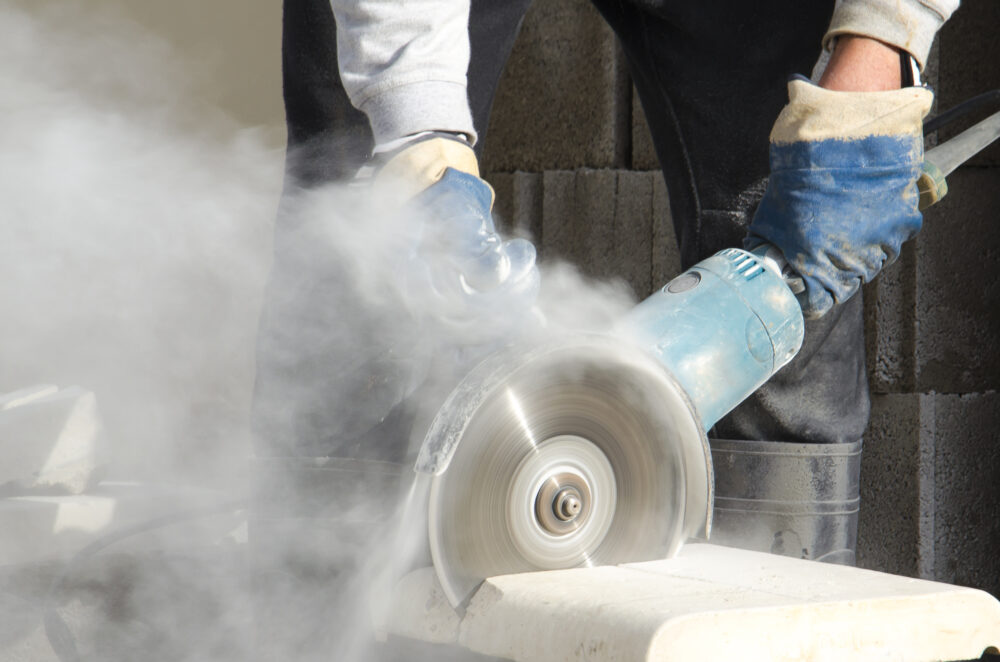
Exposure to respirable crystalline silica dust results in an increased risk of developing silica-related diseases, such as silicosis. Silica dust exposure has been a known risk to workers across many industries including mining, construction and manufacturing, for many decades. Chronic silicosis typically develops in workers exposed to low concentrations of silica dust over a prolonged period (25-30 years).
The increased use of artificial stone in stone benchtop fabrication and installation, has resulted in a new cohort of workers exposed to high concentrations of silica dust. Concerningly, a growing number of workers are displaying an accelerated type of silicosis within 3-5 years of exposure. The high content of silica in artificial stone, compared to natural stone, is thought to be a contributing factor.
In 2020, ISCRR undertook an Environmental Scan for WorkSafe Victoria to identify the treatment options for occupationally-acquired silica-related disease. Since then, several strategies have been implemented to reduce the risk of exposure to silica dust, including:
Two years on, ISCRR conducted a further Environmental Scan for WorkSafe Victoria, providing an update on current and emerging treatments for silica-related diseases. Since the last report very little has changed in terms of management and treatment options. There are no proven treatments to reverse or halt disease once it has started. The only effective strategy is to protect workers from silica dust exposure.
Regarding silicosis, once they are diagnosed, workers must be removed from any further silica dust exposure and provided with psychological support. Treatments depend on disease progression, with smoking cessation being step 1 (if applicable).
Possible treatments as disease progresses:
Silica-related diseases can vary in symptoms and complications hence a very tailored approach is needed for disease management.
There are some promising treatments under investigation, but none will be available in the near future. To protect workers, we must maintain a strong regulatory system and efficient health surveillance for early identification of silica related disease.
The research report is available to download from the ISCRR Clearinghouse.